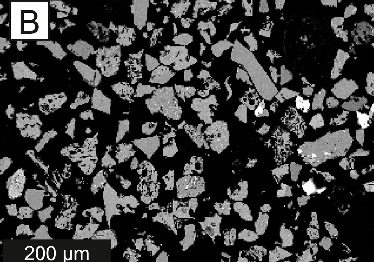Evidence for an unknown explosive eruption of Mt. Etna volcano (Italy) during the Late Glacial

Del Carlo P., A. Smedile, M. Petrelli, A. Di Roberto (2020).
Journal of Volcanology and Geothermal Research, https://doi.org/10.1016/j.jvolgeores.2020.106992.
Abstract
We report on the geochemical and chronological characterization of a tephra layer, here called RdV-T1, recovered within a continental sequence at Riparo di Venere site in the Fucino Basin (central Italy). Textural, mineralogical, and detailed geochemical (major and trace elements on single glass shard) analyses indicate that Mt. Etna is the volcanic source. Radiocarbon dating of charred materials above and below this tephra layer result in 13,380 ± 40 (16,260–15,920 cal yrs BP) and 13,620 ± 40 (16,625–16,230 cal yrs BP) 14C years BP, respectively. This age points out that RdV-T1 tephra derives from the Late Pleistocene activity of the Ellittico caldera-forming phase of Mt. Etna that is significantly (up to 1750 yrs) younger than the Biancavilla Ignimbrites and upper Acireale fall, which are the last known events of this eruptive cycle. In addition, the RdV-T1 tephra geochemical signature is distinct with respect to the Biancavilla Ignimbrites and upper Acireale fall. Therefore, the radiocarbon and geochemical data consistently indicate that the RdV-T1 tephra may represent an explosive event following the Biancavilla Ignimbrites and the upper Acireale fall not yet identified.


Devi effettuare l'accesso per postare un commento.